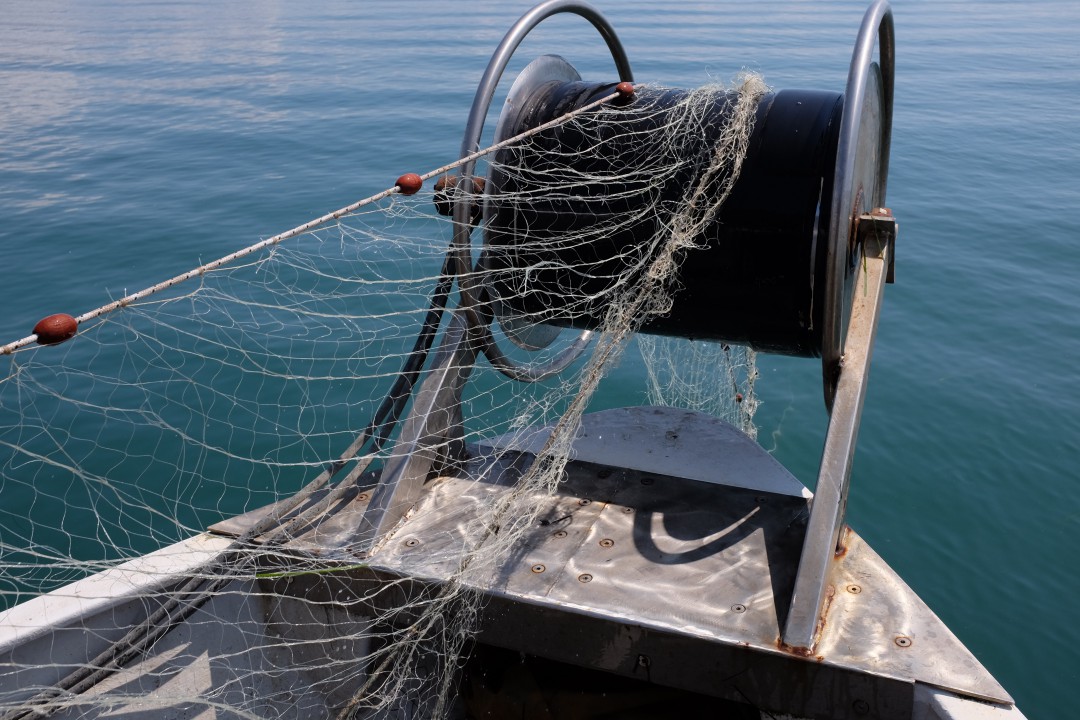Le reti da posta sono reti passive: catturano cioè il pesce che vi incappa restando ferme rispetto all'acqua o al fondo. Possono esser calate singolarmente (una pezza), ma normalmente ne vengono calate più pezze legate l'una all'altra a formare una “stesa“ (in francese “tesure“). Le dimensioni e il numero di pezze calate in una “stesa”, dipendono da vari fattori tra cui l'area di pesca prescelta, la specie bersaglio, le dimensioni del natante, l'equipaggio etc. Si tratta di una pesca artigianale, stagionale e costiera; analisi scientifiche degli ultimi anni hanno evidenziato che le reti da posta quando vengono usate in accordo con le limitazioni e i regolamenti emanati, sono reti con una buona selettività e un basso impatto ambientale. Nel Friuli Venezia Giulia si usano principalmente tre tipi di reti da posta: reti ad imbrocco, reti a tremaglio e reti da posta fisse. Le reti da imbrocco. Sono reti ad unica parete con pezze in nylon di circa 50 metri ciascuna, alte da 1.50 m a 3 m. Nel golfo e nelle lagune si usano diverse reti da imbrocco : barracuda con maglie di 34-40 mm per pagelli, mormore, orate e branzini; menaide con maglie di 10-14 mm usate in estate, durante il fermopesca dello strascico, per il pesce azzurro, erano usate sino agli ’20 e poi vennero sostituite dalle saccaleve; cagnolere con maglie di 60-80 mm per la cattura in particolare dell’”asià” o spinarolo, in primavere ed estate usate dalle marinerie di Grado e di Marano; squaineri simili alle precedenti usate in inverno in prossimità delle foci fluviali per rombi, razze, pesci angelo. Reti a tremaglio (passelere). Questi attrezzi, i più usati in Regione, rientrano tra la categoria delle reti da posta e nello specifico si compongono di tre lunghi pannelli rettangolari di rete, collegati nella parte superiore alla lima dei galleggianti e nella parte inferiore alla lima dei piombi. Il pesce, da qualunque lato provenga, supera la prima pezza esterna (la serbera), con le maglie più grandi (60 – 120 mm), ma viene a contatto con la seconda, quella centrale (la nappa con maglie di 35-50 mm) che forma una specie di sacca, e nel tentativo di sfuggire, si insacca sempre di più. Generalmente ancorato al fondo, usato durante tutto l’anno e a tutte le profondità, cattura specie di fondale come passere, sogliole e cannocchie. Reti da posta fisse. Sono costituite da pezze molto alte fino a 20 metri con maglie da 12 a 20 mm, ancorate al fondo perpendicolarmente alla costa triestina, catturano calamari, moscardini, seppie e agoni.

